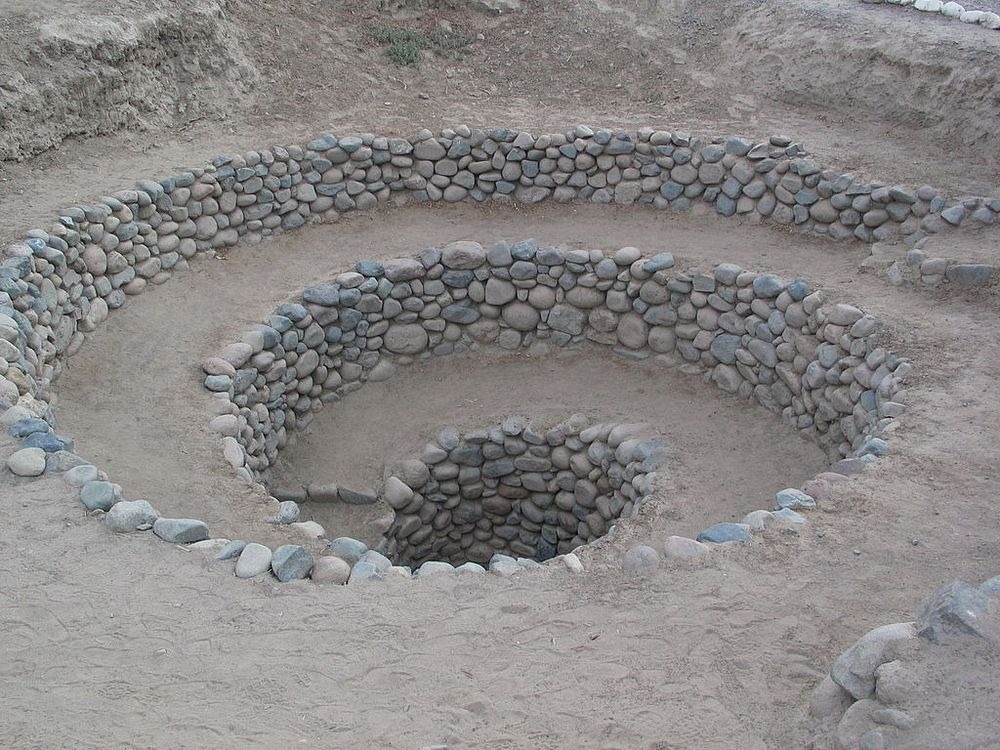Dotting the landscape across the dry valleys of southern Peru, near the city of Nazca, an area famous for the mysterious Nazca lines, are large spiraling, rock-lined holes that lead to an underground network of ancient aqueducts. These aqueducts form part of a sophisticated hydraulic system containing trenches, tunnels and wells —known collectively as puquios— that bring water from underground aquifers up to the surface for domestic and agricultural use. Although their age is still debated, the puquios are thought to have been constructed by the same people who created the Nazca geoglyphs. Many of these are still used by the inhabitants of the valley.
The most visible part of the system are the spiraling, funnel-shaped holes called ojos. On the surface of the ground, the opening of the conical ojos can be as wide as 15 meters. At the bottom they are about a meter or two across. Aside from providing access to the water in the tunnels, they also served as entrances to the tunnels for cleaning and maintenance, a task that continues up to the present day. The wells also let wind into the canals and force the water through the system.

Photo credit: Ab5602/Flickr
Read more »© Amusing Planet, 2016.









Comments